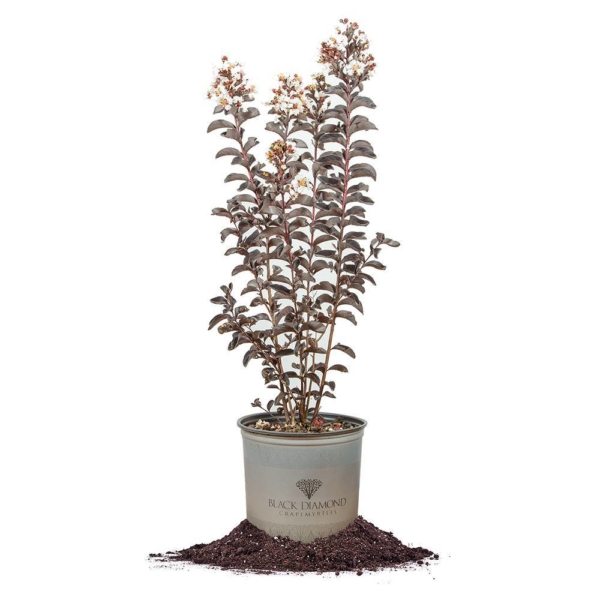Instead of Over Pruning, Choose Smaller Trees to Fit Your Planting Site
Pollarding is a type of over-pruning that entails lopping off the branches of a tree back to the primary “scaffold” branches, leaving just short stumps. The stumps then re-sprout, each with many thin vigorous shoots, producing an upright clump that forms a dense ball of foliage and flowers atop the trunk.
A pollarded tree can have short scaffold limbs, or merely a single stubby head on the top of its trunk. The “mop-head” or lollypop shape is formal, but artificial, and can be considered unattractive when the tree is leafless.
Pollarding and coppicing are two types of wood pruning that allows us to harvest wood from the same trees and keep the root systems in tact. Coppiced wood can be harvested in sections and can be a fast supply of naturally renewing timber. This type of woodland management can be done in a variety of habitats but it is not so much the best decision for the health of the tree.
Best Selling Crape Myrtle Trees
Reasons to Use the Pollarding Pruning Technique
Pollarding is done to maximize the springtime display of colorful shoots growing or flowers, to produce larger, more colorful leaves, or to keep the tree smaller than its natural shape. Pruning stimulates new growth, and the more new growth you get on a young tree that flowers on its new wood, the more spectacular the display.
Pollarding also is useful where the natural crown of the tree would produce too much shade or be too large for the site, as in urban environments or along streets that may be touching telephone or electrical wires.
Coppicing
Pollarding is similar to coppicing, which is cutting off the tree’s trunk to near ground level in order to encourage many basal shoots. Coppicing and pollarding were traditionally used to produce a supply of firewood or to grow thin flexible stems for basket weaving or fencing without killing the tree. Pollarding was preferred over coppicing because of the new shoots above the reach of grazing livestock. Pollarding is a high maintenance type of pruning practice that is required annually to maintain shape. It produces vigorous new growth that can be highly ornamental. After a few years, the swollen, club-like stumps give the tree a weird, unnatural look when leafless. Many people do not like the look. The term “crape murder” is sometimes used to describe the practice on crape myrtles.
Why not consider the following before over pruning your trees:
- Choose smaller trees for your planting site. Pick your planting site and then decide on a tree that will fit.
- Other pruning options like heading cuts or trimming can be just as satisfactory with less damage to the tree. Check out this blog on Basic Pruning for Trees and Shrubs for more info.
Many kinds of trees are not suitable for pollarding because they do not recover from extreme pruning.
In Europe, it is common practice to pollard street trees for size control. The London plane trees (Platanus x acerfolia) and sycamores (P. occidentalis) along the narrow streets of San Francisco are pollarded to keep them from getting too large. In the southern United States, it is common to pollard crape myrtles, especially in medians and along streets. Pollarded crape myrtles present an outstanding display of color at eye level for several weeks in early spring and early summer but are not the prettiest when the mature trees are leafless in winter and present eyesores.
Instead of over-pruning and using techniques like pollarding or coppicing, choose smaller trees to fit your planting site. It is best practice to let the trees grow to their natural shape unless absolutely necessary or in a controlled environment.


























